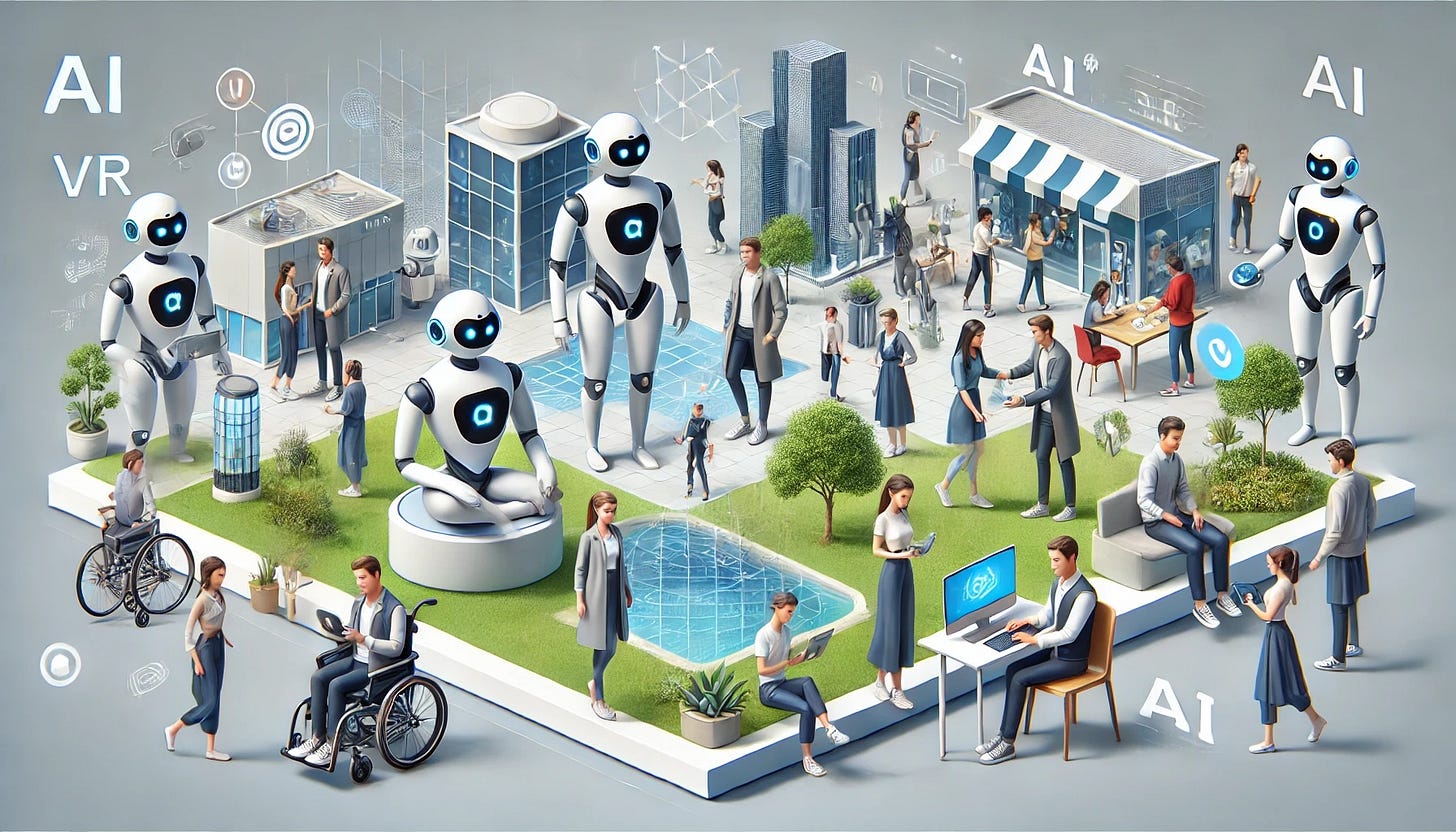Why AI Might Turn Us into Lovable Low-Skilled Humanoids (But It Doesn’t Have To)
Let’s face it, folks: the robots are coming for our jobs, our authority, and quite possibly our very sense of self-worth. Look around at any major industry—from finance to manufacturing to marketing—and you’ll find an algorithm lurking around the corner, or a sleek robotic arm ready to outperform a human by several multiples. It’s natural to wonder if we’re sliding toward a future in which humans collectively shrug, say “Why bother?” and let the machines run the show. Will we all become unmotivated, low-skilled humanoids in an AI wonderland?
Part I: The March of the Machines
Automation isn’t new. It’s been lurking around since the earliest mechanical looms took jobs from hand-weavers, igniting the infamous Luddite rebellions. But today’s wave of automation looks different. AI and robotics are hitting not just physical labor but also the realm of knowledge work. Suddenly, we have:
1. Robots that drive (self-driving cars)
2. Algorithms that write (ChatGPT and cousins)
3. Automated decision-makers (machine learning tools analyzing everything from creditworthiness to health data)
4. Weirdly lifelike humanoid assistants that can greet you at the mall, deliver your groceries, and maybe do your taxes
It all points toward a new economy where computers do the “heavy cognitive lifting” that used to require years of training and education on the human side. Where does that leave us?
Part II: The Onset of Complacency
Let’s be real: if the future arrives and machines can do 90% of our work, a big chunk of humanity might decide to phone it in. Why toil away when your personal AI butler can handle your day job and pay the bills (or at least handle the grunt work)? This scenario raises a genuine concern that humans could lose motivation and become complacent—chilling at home in VR pods while intangible robots handle the real-world tasks.
The risk here isn’t just about jobs, it’s about losing the drive to learn. Historically, we’ve improved our skills out of necessity—to avoid famine, to get a better job, to keep up with changing demands. But if survival no longer requires hustle, might we opt out of skill-building altogether?
Part III: The Human Element—Choice and Emotion
We humans still have two critical edges:
1. Choice: We can decide how to respond to each wave of innovation. We can choose to adapt, we can choose to pivot, and we can decide what matters most in a world flooded by AI.
2. Emotion: Our emotional depth, empathy, and unpredictability remain profoundly human. We might not all be brilliant astrophysicists, but we can express compassion, creativity, joy, heartbreak, and a million other things that code can’t quite capture (yet).
Of course, it’s also worth noting that humans tend to do silly, inefficient, and downright bizarre things because we feel like it. That spontaneity makes us, well, human. No AI is going to replicate the deep satisfaction of building a bizarre sculpture out of old tires just because you had a hunch it would look cool. Machines optimize for efficiency; humans also optimize for delight, curiosity, and sometimes pure weirdness.
Part IV: Education for the Post-AI Era
So how do we avoid going the way of complacent, sweet but unskilled humanoids? We need education that’s fit for a future of AI and robotic sidekicks. That means:
1. Teach Adaptability: Instead of rote memorization, emphasize how to learn new skills quickly. A dynamic workforce should be able to pivot as soon as new tech arrives.
2. Foster Creativity and Emotional Intelligence: These are famously “hard to automate.” Classes on problem-solving, design, empathy, and conflict resolution become critical if we want humans to remain distinct from AI.
3. Encourage Interdisciplinary Learning: Tomorrow’s best workers may be the ones who blend tech, humanities, design, and ethics. That’s how you create synergy—i.e., what a machine might call “unexpected connections.”
4. Embed Ethics and Civics in the Curriculum: With AI taking over complex decisions, society will need citizens who can hold these new systems accountable. How do we ensure fairness, transparency, and diversity in algorithmic decisions? It takes a certain type of human to speak up when the robot’s math starts drifting into moral grey areas.
Part V: The Future Ain’t Set
Even if robots become advanced enough to handle everything from coding to cooking, humans can still find deeper meaning. In fact, if anything, a future of extreme automation might finally liberate many of us from mindless tasks, allowing our society to focus on the things that only humans do best—loving, empathizing, storytelling, and yes, sometimes messing up in hilarious, creative ways.
Of course, we could also choose door number two: letting ourselves become a dull but pleasant species, coddled by our robotic overlords. Motivation would wither, skill-building would dip, and the main “skill” we’d need is a knack for politely instructing Alexa 17.0 to feed the dog. But that would be our choice, and it’s by no means inevitable.
In a way, AI is a mirror. It reflects our decisions, our values, and our willingness to engage. If we decide to be lazy, the technology will facilitate that. If we decide to push ourselves, it’ll help us aim higher than we ever could alone. The next wave of education will be key to which of those outcomes we land on.
So, as the bots become more advanced and ever-more integrated into our daily routines, remember this: We remain the emotional, imaginative, even irrational creatures at the center of it all. Machines may handle the heavy lifting, but they can’t replace our ability to laugh, cry, rage, and create. And that, my friends, is the no-nonsense, no-robots-required impetus for us to keep pushing forward—as students, workers, lovers, dreamers, and the occasionally brilliant but always emotional humans that we are.


